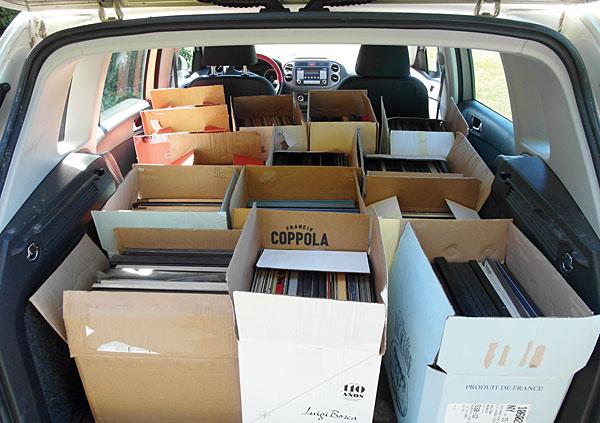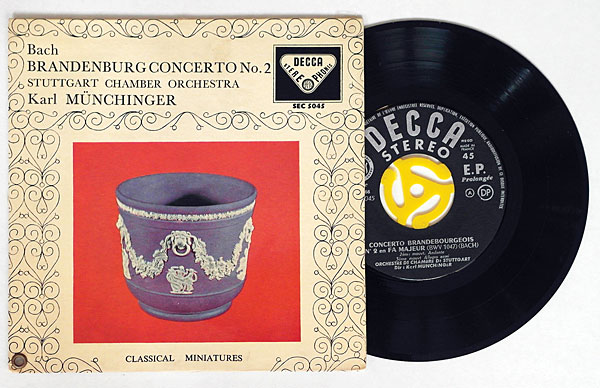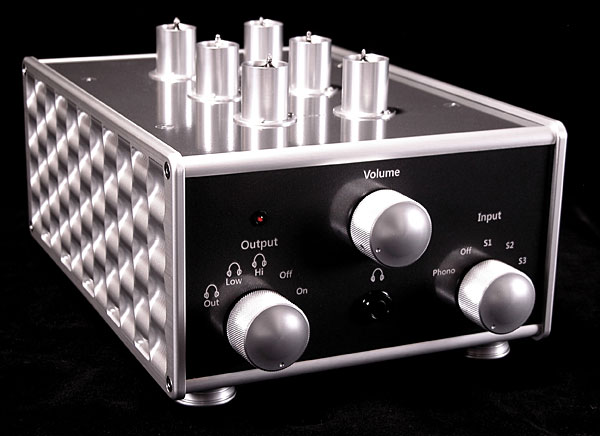| Columns Retired Columns & Blogs |
Interesting bit of info regarding price change requests.
I'd also appreciate such requests being published. Readers can draw whatever conclusions they wish, which is just as fair as the "corrections" themselves.

His style of hitchhiking is simple: Step into the path of a moving car and see what happens. Until recently, my own response was one of avoidance and acceleration—to flee, as it were, a shadow (which, as already mentioned, I once suspected him of being). But on a morning last month, as I returned from driving my daughter to her part-time job, I decided it was no longer sensible or even acceptable for me to avoid him. I pulled over, rolled down the passenger-side window, and asked where he was headed. The Old Soldier, who that day looked about 70, replied by opening the door, sitting down, and fastening his seatbelt without prompting—the last an unexpected concession to life in the 21st century.
We exchanged first names and shook hands, and I carried on driving. My passenger asked what I do for a living, and I told him that I write magazine articles. I asked what he does for a living, and he replied, "I'm a collector. I collect old military uniforms and 45rpm records." So much for the mystery of the Old Soldier's anachronistic appearance. And as for the man's interest in records, he spoke for a few minutes, at my urging, about the music he enjoys ("Country and western. The good stuff. Not that new shit. Jesus.") and the reasons for our shared love of vinyl ("I don't have a CD player. Don't want one, either.").
I admit, with shame, that my materialistic streak often surfaces when I meet someone—especially an older someone—who has in abundance those things I covet: vintage guitars, vintage audio gear, vintage books, vintage fly rods, and, of course, vinyl. I've resolved, in recent years, to try harder to banish from my mind all thoughts of material goods when meeting such folks, and to simply enjoy their company; unfortunately, like my record collection itself, my personality is a work in progress.
But on this late-summer morning I scarcely had to try at all: I have no interest whatsoever in 45s. In 59 years of life, 49 of which have been spent as a vinyl buyer, I have accumulated no more than two dozen of the things, and while I appreciate a good one when I hear it, the 7" record is forever in my growing blind spot.
Or so I thought before Tuesday.
Another veteran of vinyl pursuits—an older man whom I've known, through other friends, for about a dozen years—got in touch to say he planned to vacate his Manhattan apartment, and wondered if I could help him dispose of his collection of approximately 1000 classical LPs. The man was convinced he'd have to pay someone to haul away the 20 cartons of vinyl now scattered throughout his tiny home—an impression that, I'm sorry to say, at least one less-than-scrupulous NYC-area record dealer did his best to encourage. I offered to drive down and buy them for as much as I could afford to pay. A deal was struck, and, to the best of my recollection, as I was running out the door, I whispered to Janet that there might soon be 20 more cartons of LPs in our living room. Honest.
The number proved to be fewer than 20: There wasn't enough room in my Volkswagen Tiguan for the last four cartons, which now await my return before winter starts in earnest. And the media proved to be more than just LPs: I spied in one of the cartons a small pile of 78s and, surprisingly, about a dozen 45s. Perhaps, like many record collectors who were active in the 1960s, this gentleman bought the occasional single by the Beatles or the Beach Boys, just for the fun of it? That was the first carton I emptied on my return, and I was surprised to see, at the top of the pile of 45s, the rounded-triangle logo used by Decca during their golden era of Full Frequency Stereophonic Sound (ffss) records. Good grief: I was looking at a 7", 45rpm record of classical music!

The record, which bears the catalog number SEC 5045, is a perfect miniature of an English Decca LP from the early 1960s, right down to the fold-over sleeve and the back-cover ad for the Decca ffss Stereophonic Pick-Up and Arm ("a triumph of British engineering and craftsmanship"!). The music engraved on its two short sides is J.S. Bach's Brandenburg Concerto 2, with Karl Münchinger and the Stuttgart Chamber Orchestra—a recording that also appeared on a Decca LP (SXL 2126), paired with the rather longer Concerto 5. Unable to contain my curiosity a moment longer, I fired up the hi-fi and was treated to some of the most sublimely clear, colorful, and tactile sound in the Decca catalog. And that's saying something; in addition to showcasing an impressive roster of world-class performing artists, Decca's stereo classical recordings from 1957 through 1967 are simply the best such things ever made, surpassing by a slight margin even the superb products of EMI, and leaving everyone else in the dust (a fitting metaphor in the case of other highly touted records that, to my ears, sound somewhat grungy by comparison).
Having read that Decca stereo LPs of that era were, as a matter of course, mastered at half speed, I wondered if the same might be true of this 45rpm microgroove single. I also wondered if there were any more at home like her. I searched for other numbers in the series, and learned at once that Decca SEC 5044 is 45rpm record of Ravel's Boléro—which, like my Bach single, has as its cover art a photograph of a small bit of pottery, under which appears the series title Classical Miniatures. Other numbers brought up other titles, also containing excerpts from various LPs from Decca's hallowed SXL series—somewhat more expensive things, by comparison. It may be time to expand my collection in a new direction.
Incidentally, my new pile of 45s includes classical titles from other labels, including Columbia, RCA (Jascha Heifetz on the same shade of red vinyl as the 1971 Nazz album Nazz Nazz), Royale (an American label that seems to have specialized in European recordings, also on red vinyl), Disques de l'Oiselet (a French label whose logo suggests a connection with the EMI offshoot l'Oiseau-Lyre), and Cantate, a German label with an apparent passion for publishing the religious works of Heinrich Schütz on 7", 45rpm records. (I can just imagine the parties . . . )
Coffman Labs G-1A preamplifier
Back in the 1980s, when I landed my first job in the audio-industry press, I was surprised to learn how many well-known high-end companies farm out their assembly work to manufacturers of medical equipment. Surprised, but not horrified: After all, if a factory can produce a functioning CT scanner (average price: $200,000), or even a no-frills liposuction aspirator (average price: $2000), how hard could it be to turn out a halfway-decent CD player, or a turntable with a vacuum platter?

I'm reminded of that time-honored relationship by Coffman Labs, a new company (footnote 1) whose founder, Damon Coffman, has served as both CEO and CTO for a prominent West Coast manufacturer of medical electronics. More interesting is the means by which Coffman earned a living while doing his graduate work in physics: as a concert violinist. It's as if an aspiring maker of frankfurters had experience in the interrelated disciplines of the culinary arts, animal husbandry, and highway maintenance: If there's a more perfect background for an audio manufacturer, I can't imagine what it might be.
Coffman Labs' first product is the G-1A preamplifier ($5495), a line stage plus phono stage that uses seven vacuum tubes: a 5AR4 full-wave rectifier plus two each of the 12AX7, 12AU7, and 5687 dual triodes. Because much of his debut product's circuitry is built around vintage parts—including old-style, metal-encased oil capacitors and a new-old-stock (NOS) rotary switch from eastern Europe—Coffman is following Shindo Laboratory's lead in offering the G-1A as a limited-edition product (footnote 2).
Although it lacks a balance control and a mono switch, the Coffman G-1A tempts the hobbyist with other amenities—and it is nothing if not headphone friendly. A rotary output switch allows the user to choose between double pairs of rear-mounted output jacks and the G-1A's front-mounted, ¼" headphone jack, the latter with settings for headphone loads of greater than 100 and less than 75 ohms, and loads that are best driven directly by the preamp's line stage. The output switch also has a position labeled Out, which disconnects all outputs and, at the same time, shorts whichever input is currently in use. (When desired, all inputs can be shunted to ground with a separate Mute control.)
Footnote 2: Coffman Labs and their sole distributor, Echo Audio, say that production of the G-1A will be limited to 500 units—which would, in fact, be a very large run for some companies that don't limit their production. My review sample was No.34.

Interesting bit of info regarding price change requests.
I'd also appreciate such requests being published. Readers can draw whatever conclusions they wish, which is just as fair as the "corrections" themselves.

So where did the Old Soldier want to go and where did you drop him off?
I hope to see a follow up story about the Old Soldier. Aren't you curious to see his stash of stuff?
Greg